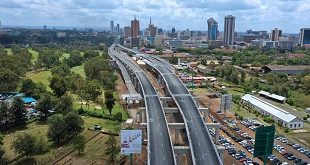
The East African country currently hosts the largest number of refugees and asylum-seekers in Africa
Kampala, Uganda | RONALD MUSOKE | The United States government has given the Ugandan government Shs 27 billion (US$7.5 million) to support its response to the Sudanese refugee influx. The new funding brings the total U.S. humanitarian assistance to Uganda in the current fiscal year to more than US$92 million (Shs 420bn).
The U.S. Mission in Kampala said in a statement issued on October 8, that the new funding, provided through the U.S. Department of State’s Bureau of Population, Refugees, and Migration, will enable the Uganda Office of United Nations High Commission for Refugees (UNHCR) to deliver critical assistance to Sudanese refugees and their host communities. This support includes emergency relief supplies, healthcare services, protection for vulnerable children and victims of gender-based violence, as well as improved water and sanitation facilities.
William Popp, the U.S Ambassador to Uganda, said the crisis in Sudan is a global challenge, and that the U.S is proud to help the Ugandan people as they provide safety and security to their neighbours from Sudan.
“As the largest single donor of humanitarian assistance supporting Sudanese refugees in Africa, we recognize the importance of assisting those fleeing conflict and working toward a safe return when the fighting ends,” Amb. Popp said.
The latest U.S assistance to Uganda comes at a time when the government of Uganda is grappling with an influx of Sudanese refugees amidst a raging war in Khartoum. Since the start of this year, Uganda has received over 40,000 Sudanese refugees, with half that number settling in Kampala, according to the UNHCR.
The influx is as a result of the ongoing civil war in Sudan, which began in April 2023, between two rival factions of the military government: the Sudanese Armed Forces, led by Abdel Fattah al-Burhan, and the paramilitary Rapid Support Forces, allied with Janjaweed leader Mohamed Hamdan.
Sudan, which has a long history of generously hosting refugees, used to be home to over one million refugees – the second highest refugee population in Africa – mainly from South Sudan, Eritrea, Syria, and Ethiopia, as well as the Central African Republic, Chad and Yemen.
However, over the recent years, outbreak of violence in various parts of the country has also forced Sudanese nationals to flee their homes. Currently, the UNHCR estimates over 7.7 million people to have been internally displaced within the country while over 1.5million have fled the country seeking safety and protection across borders. Thousands have ended up in Uganda.
Uganda’s open-door policy under test
For decades, Uganda has been widely praised for its open-door policy toward refugees. However, in recent years, the government has consistently faced challenges in accommodating new arrivals from Sudan, the Democratic Republic of Congo, and South Sudan, particularly in providing adequate healthcare and education services.
The UNHCR says the continuous influx of refugees into Uganda may not be making the headlines but, combined with funding shortfalls, it puts significant pressure on protection and assistance services provided to refugees and their host communities, risking Uganda’s solid protection regime and refugee response model.
Social services strained
The health sector, for instance, which serves both refugees and the surrounding host populations – has probably been hit the hardest. In many refugee settlements, health centre staff numbers have had to be reduced and there are insufficient supplies to meet critical health needs.
In the middle of this year, an outbreak of conjunctivitis (red eye disease) around the country impacted several refugee settlements. More than 140 cases of conjunctivitis was reported in Nakivale Refugee Settlement in Southwestern Uganda and there were concerns that it could worsen due to a shortage of water and soap, impacting hygiene.
Mental health, too, has become a big concern in many refugee settlements. Four attempted suicides among refugees in Adjumani District in northwestern Uganda– two of them young people – have been reported recently, highlighting the vulnerability of youth and the necessity for increased targeted interventions.
In most refugee settlements, schools are overcrowded and there are not enough teachers or educational materials, making it difficult for children – representing more than half of the total refugee population – to access education.
Critical protection services are also being hampered. For example, refugee registration is facing lengthy delays as there is a lack of necessary materials and equipment to make the process smoother. Investment in supporting refugees with income-generating activities have also had to be curtailed, with a ripple effect on efforts to make refugees less dependent on aid.
Refugee population to hit 2 million mark
Uganda currently hosts the largest number of refugees and asylum-seekers in Africa, with nearly 1.7 million people, primarily from South Sudan and the Democratic Republic of Congo, according to UNHCR. However, Uganda was listed among the UN refugee agency’s 13 most underfunded operations globally last year.
However, according to Helen Bugaari, the Director of the Comprehensive Refugee Response Forum (CRRF), the population of refugees in Uganda might hit 2 million by the end of this year.
This year, the Uganda Country Refugee Response Plan (UCRRP), which aims to raise US$858 million to support 96 partners in assisting 1.7 million refugees and 2.7 million host community members, has received only 13% of the required funding.
Both Ugandan and UNHCR officials are worried about the impact of low funding to the refugees. They say some refugees might, out of frustration, eventually end up going back to their unsafe countries. In May, the UNHCR reported some refugees leaving for neighbouring countries citing lack of support and the reduction in food rations.
“If there is no action, development gains and institutional capacity will be weakened and peaceful coexistence with the hosting communities hampered. More international support is needed to help support Uganda’s commitment to refugee protection,” one official said.
For decades, Uganda has been at the forefront of assisting refugees and has been a beacon of stability in the region, embracing progressive policies that exemplify the Global Compact on Refugees including allowing refugees to have land and freedom of movement to reside in urban areas provided they can support themselves.
Interestingly, some government officials have noted that some refugees are often reluctant to return to their home countries, even when conditions improve, due to the peace and stability in Uganda. According to UNHCR, over 17,000 refugees have remained in Uganda for more than 20 years, with the majority hailing from DR Congo, Somalia, Eritrea, Burundi, and Rwanda.
 The Independent Uganda: You get the Truth we Pay the Price
The Independent Uganda: You get the Truth we Pay the Price





